"Rusty" American intercontinental ballistic missiles
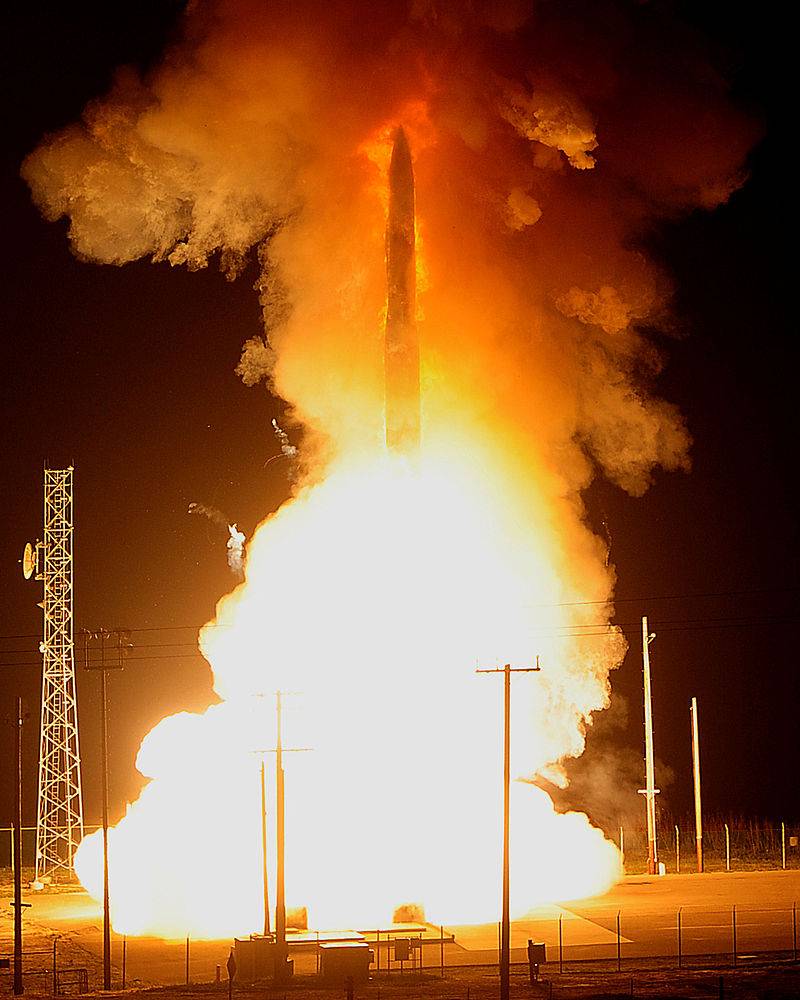
During the fighting on the Korean Peninsula, it turned out that the B-29 Superfortress long-range bombers, which until the mid-1950s were the main means of delivering American atomic bombs, are very vulnerable to MiG-15 jet fighters.
In this regard, even before the adoption of supersonic interceptors in the USSR and the mass deployment of anti-aircraft missile systems, the United States began the development of intercontinental ballistic missiles capable of delivering nuclear warheads across the ocean, regardless of weather conditions and anti-aircraft defense forces.
The history of the creation and service of American ICBMs during the Cold War
In 1954, the American company Convair received an order to develop the first long-range ballistic missile, which later acquired the name "Atlas" (Atlas).
In October 1959, the 576th US Air Force Strategic Missile Squadron, which was armed with SM-65D Atlas ICBMs (six missiles in two launch complexes, three stationary launchers each), began combat duty.
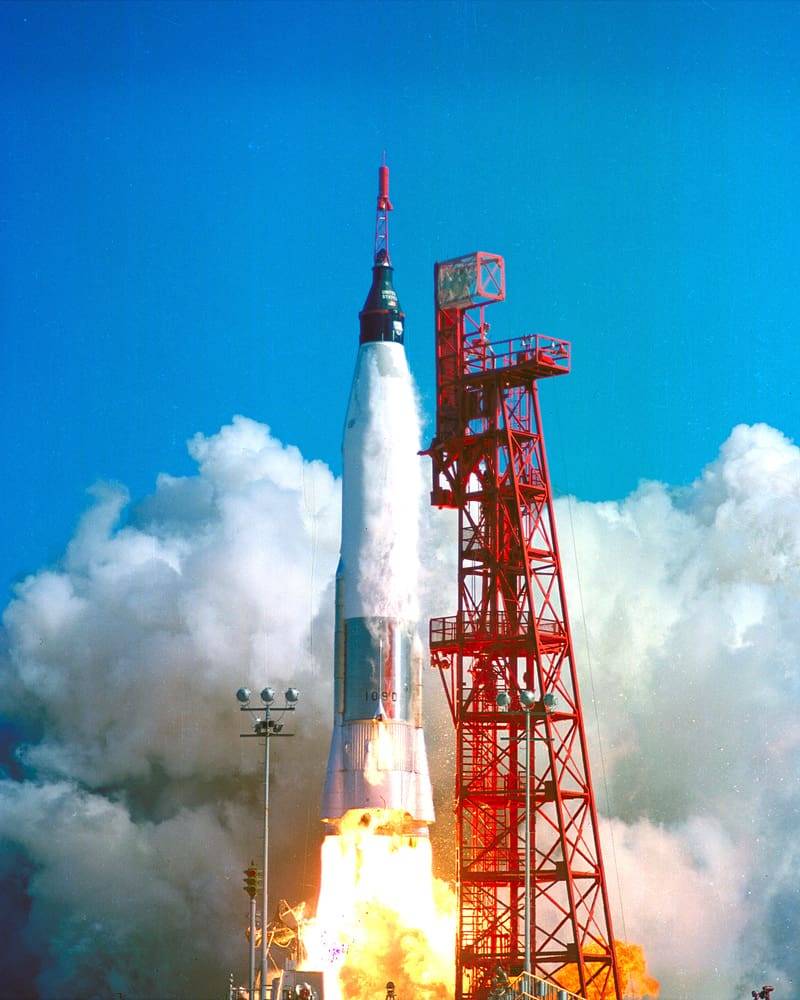
The firing range of the Atlas-D liquid-propellant rocket with a launch weight of 120 tons exceeded 10 km, the KVO was 000–1 km.
The missile, which had a length of 23,1 m and a diameter of 3,05 m, was equipped with a monoblock thermonuclear warhead with a capacity of 1,44 Mt. In total, by May 1961, 30 such missiles were deployed, which were operated until 1964.
The first American ICBMs were placed on unprotected launch pads. But most of the Atlas-D missiles were stored in closed reinforced concrete hangars in a horizontal position.
Before launch, the roof of the hangar was moved apart, the rocket was brought to a vertical position and refueled with rocket fuel components (kerosene and liquid oxygen). It took 15-20 minutes to prepare for the launch.
In the early 1960s, two more modifications were created and put into service - Atlas-E and Atlas-F.
They had an improved control system and a monoblock warhead with a capacity of 3,75 Mt. The missiles were stored in a mine 53 m deep, filled with kerosene, and refueling with an oxidizer was carried out immediately before launch. It took 5-7 minutes to refuel. The rocket, already refueled, was lifted from the shaft to the surface using a special elevator.
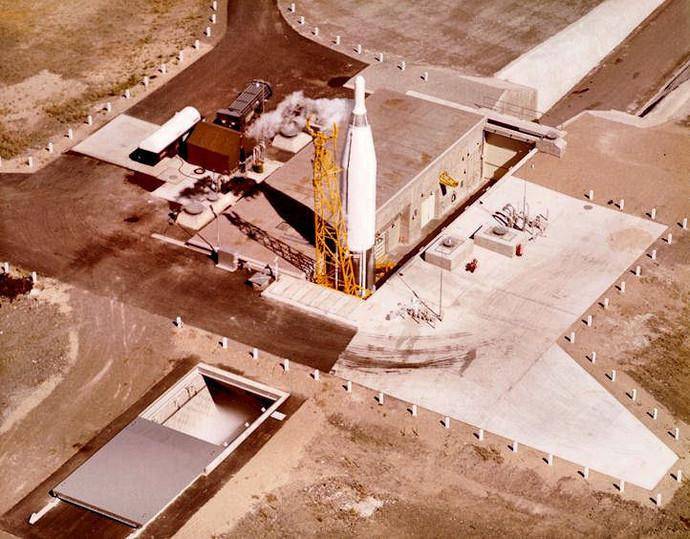
ICBMs of the Atlas family proved to be problematic in operation, and several explosions occurred during combat duty due to fuel and oxidizer leaks. Due to the high risk of accidents and the unsatisfactory security of launch sites, in April 1965, all Atlas missiles were removed from combat duty.
Subsequently, they were converted into launch vehicles and used in space programs.
In case of failure with the creation of rockets of the Atlas family, Martin was given an assignment in 1955 to design the Titan I ICBM. The engines of this rocket also ran on kerosene and liquid oxygen. The mass of the rocket exceeded 105 tons, the length was 31 m and the diameter was 3,05 m. The maximum range was about 10 km. KVO - 000–0,9 km.
The SM-68 Titan I ICBM was originally supposed to be located in protected mines, its deployment from April 1961 was carried out in parallel with the Atlas family of missiles.
The launch complex of the Titan-1 ICBM was located underground and included three mines with missiles spaced 400–500 meters apart. At each launch shaft there was an underground storage of liquid oxygen and fuel and a control bunker.
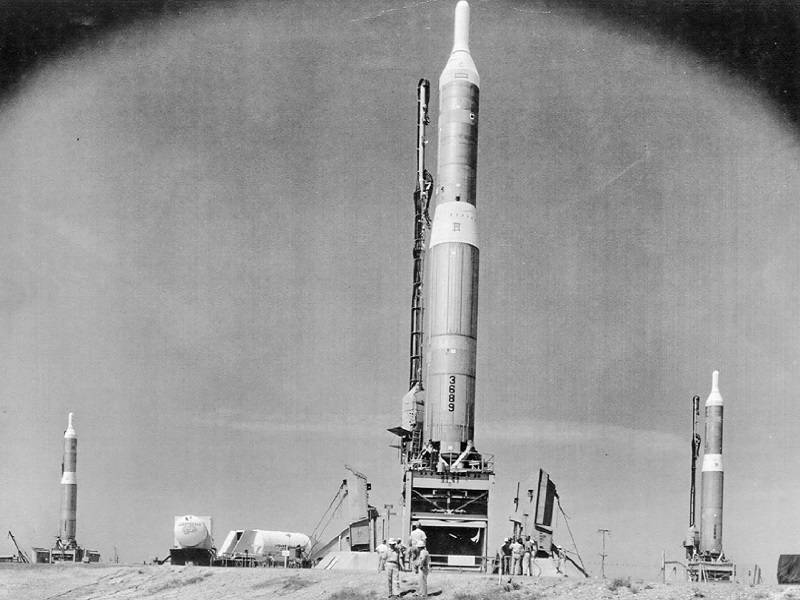
Since rapidly evaporating liquid oxygen was used as an oxidizer, refueling took place when a command was received to prepare for launch.
It was impossible to launch from the mine, the fueled rocket was raised on a special elevator and started from the surface. Refueling and lifting of the rocket took about 15 minutes.
To equip six missile squadrons, 101 missiles were received (9 missiles per squadron). In total, there were 54 missiles in the mines, 6 more missiles were in operational reserve, with the ability to quickly load into the mine. The rest of the ICBMs were stored in warehouses.
Due to the advent of more advanced ICBMs, the duration of the combat service of the Titan-1 missiles was short. By May 1965, all the Titans of the first model were removed from the mines and sent to storage, where some of them remained until the 1980s.
Even at the development stage of the Titan-1 rocket, it became clear that the use of liquid oxygen greatly complicates operation, does not allow the rocket to be launched quickly after receiving the command, and creates the preconditions for emergency situations.
Service and operational and tactical and technical characteristics can be significantly improved through the use of self-igniting fuel components and the use of more powerful engines on both march stages.
The transition to a fully inertial control system made it possible to place ICBMs in separate mines, 11-16 km apart from each other, and increase their resistance to a disarming strike.
In March 1962, flight design tests of the LGM-25C Titan II rocket took place, which was put into service in June 1963.
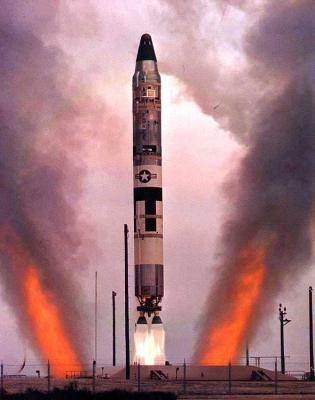
Aerozine-50 (a mixture of equal parts of unsymmetrical dimethylhydrazine and monomethylhydrazine) was used as a fuel for both stages of the rocket, and nitrogen tetroxide was used as an oxidizer. The rocket was launched directly from the mine according to a hot gas-dynamic scheme with the launch of the first stage engines.
The launch weight of the Titan-2 ICBM increased to 150,5 tons. Length - 32,92 m. Diameter - 3,05 m. Firing range - up to 15 km.
The missile was equipped with a monoblock thermonuclear warhead with a capacity of 9 Mt with a CEP of no more than 1,6 km. This warhead was the most powerful among American ICBMs. To increase the probability of overcoming missile defense, the missile also carried light inflatable decoys and chaff.
In total, 108 Titan-2 missiles were built, and in 1967 the largest number of them was deployed - 63 units.
Although the rocket was originally expected to last no more than 10 years, it turned out to be much longer. But after a series of severe accidents that occurred in the late 1970s and early 1980s, President Ronald Reagan in October 1981 decided to decommission all Titan-2 ICBMs.
The last missile of this type was withdrawn from service in May 1987. A significant part of the Titan-2 ICBM was converted into launch vehicles and used to launch spacecraft.
Thanks to the progress made by American chemists in the field of creating effective formulations of solid jet fuel and the availability of industrial facilities for establishing its mass production, the development of solid propellant ICBMs began in the second half of the 1950s.
The use of solid fuel made it possible to make the operation of rockets much safer, more convenient and less expensive, as well as to significantly extend their service life.
The Boeing company won the competition for the creation of a new rocket, the subcontractors responsible for the manufacture of solid fuel and engines were Aerojet and Thiokol.
When creating a rocket, which received the initial designation SM-80A (since 1963, LGM-30A Minuteman I), the task was to create a simple, relatively cheap ICBM, in the design of which, without a fundamental change in the main elements, various improvements could be made regarding the power plant, control systems, guidance and combat equipment.
The first successful test launch of the Minuteman at Cape Canaveral took place on February 1, 1961.
In parallel with the tests at the Maelstrom airbase (Montana), the construction of silo launchers for the first combat wing began.
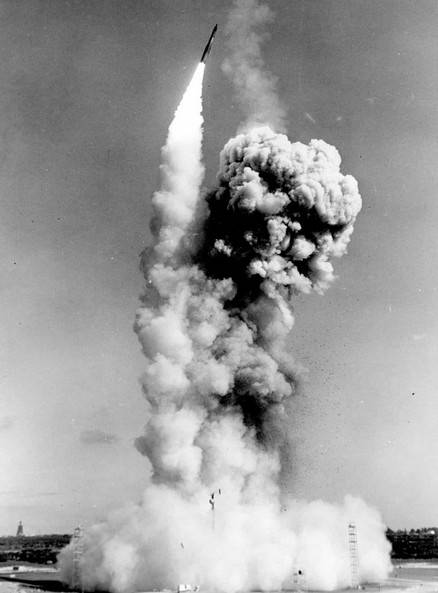
Serial production of Minuteman-1A missiles began in 1962. This three-stage missile turned out to be the most compact among serial ICBMs. Its length was 16,37 m. Weight - 29,7 tons. Diameter of the first stage - 1,68 m. Firing range - up to 9 km. KVO - 300 km.
The Mk.5 detachable warhead was equipped with its own small-sized liquid engine and carried a thermonuclear charge with a power of 1 Mt.
Compared to the liquid-fueled Titan 2 rocket, the Minuteman was a significant advance. It became the world's first mass-produced solid-propellant ICBM launched directly from the mine, the time from receiving the launch command to the launch of the rocket was only one minute. A squadron of Minutemen was nearly equal in missile numbers to nine squadrons of Titans.
From the very beginning, the Minutemen's priority targets were elements of the Soviet strategic nuclear forces: ICBM launchers, submarine and long-range bomber bases.
In July 1962, the first Minuteman-1A ICBMs entered service with the 341st Strategic Missile Wing deployed at Maelstrom Air Base.
The 341st Wing included three missile squadrons. Each squadron included five launch units (10 silos and one command post). Thus, the squadron was armed with 50 ICBMs, and 150 missiles in the wing.
Shortly after being put into service, the improvement of the first modification of the Minuteman continued.
The LGM-30B ICBM received a new on-board computer with increased memory, which made it possible to enter the coordinates of two targets - the main and the spare. The KVO was reduced to 600 m. Some of the stainless steel structural elements were replaced with titanium ones.
Thanks to weight savings, a heavier warhead with a charge of 2 Mt was installed on the rocket. The length of the new modification of the rocket increased to 17,05 m, the weight increased to 31,3 tons. The firing range is 10 km.
The first three missile squadrons armed with Minuteman-1B ICBMs reached combat readiness in the autumn of 1963. By mid-1965, the US Air Force had 650 Minuteman-1B and 150 Minuteman-1A missiles deployed. Combat duty was also carried by 54 LGM-25C Titan II ICBMs (Titan-1 and Atlas missiles were removed from service by that time).
In total, 930 Minuteman-1 ICBMs of both modifications were manufactured, which were operated until the mid-1970s.
For all its merits, the Minuteman-1A / B ICBMs were not able to hit targets throughout the USSR.
In this regard, an assignment was issued to develop a more long-range variant.
The new modification in running order weighed 33,7 tons. The length of the rocket was 17,68 m. The firing range was 11 km.
The missile, known as the LGM-30F Minuteman II, entered service in August 1965 and partially replaced the LGM-30A/B ICBM.
A total of 688 Minuteman-2 ICBMs were built, and 500 missiles were put on combat duty.
In April 1967, the number of deployed American ICBMs reached its maximum - 1 units, including 054 Titan-54s and 2 Minutemen.
In 1991, the US strategic nuclear forces included 450 deployed Minuteman-2s and about 50 missiles were in reserve.
In 1993, the withdrawal of the Minuteman-2 ICBM from combat began.
By the beginning of 1996, all of them were removed from service.
For their time, the Minuteman ICBMs of the first and second models had a high degree of technical excellence and very good performance. However, the prospects for the development of missile defense systems in the USSR largely devalued the combat significance of missiles carrying single-block warheads.
In the mid-1960s, ICBMs began to be equipped with decoys - corner reflectors and inflatable simulators of warheads, designed to deceive missile defense radars.
The next step in developing the ability to overcome missile defense was the introduction of multiple reentry vehicles.
In 1968, tests began on the LGM-30G Minuteman III ICBM, equipped with a third-stage engine with extended operating time. The new missile carried three Mk.12 warheads with 64 kt W170 charges and several decoys.
The decrease in the power of each nuclear charge compared to the Minuteman-2 warhead was compensated by better accuracy (KVO 300–400 m). The firing range has increased to 13 km. The length of the Minuteman-000 was 3 m. Weight - 18,24 tons.
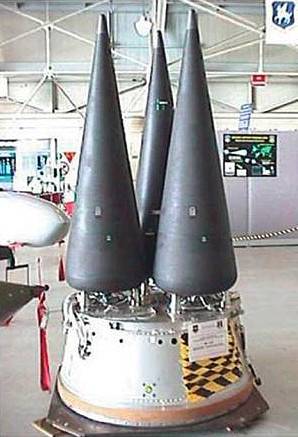
In April 1970, the first Minuteman-3 ICBM was put on combat duty at the Minot base, and by the beginning of 1972, the 91st Wing, which had previously operated the Minuteman-1B ICBM, was completely re-equipped with them.
From the middle of 1976, 450 Minuteman-2 and 550 Minuteman-3 ICBMs were on alert.
A total of 830 LGM-30G missiles were delivered, a significant part of which was used up during control and training launches.
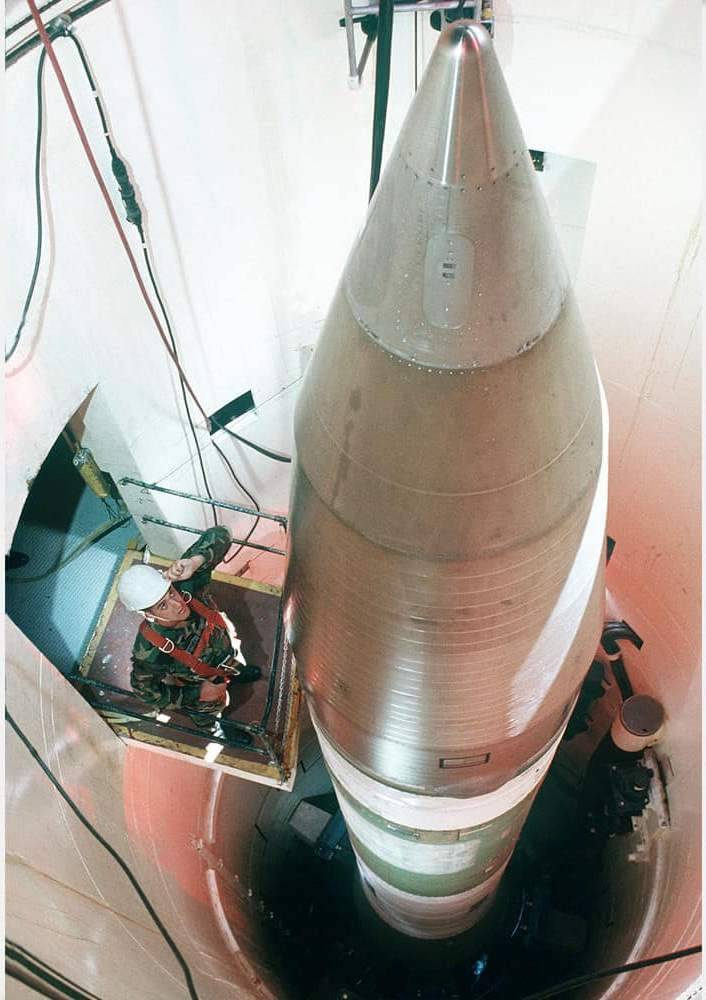
In the 1970s and 1980s, the LGM-30G ICBM underwent several improvements in stages.
In particular, it became possible to quickly retarget, and the CVO decreased to 250 m. More than half of the missiles were equipped with Mk.12A warheads with a W78 charge with a capacity of 340 kt.
By 2006, the Americans unilaterally reduced the number of warheads on all Minuteman-3 missiles to one.
In the period from 2007 to 2012, part of the Minuteman-3 missiles was re-equipped with Mk.21 warheads with a W87 thermonuclear warhead with a power of 300 kt. W87 warheads were removed from retired LGM-118 Peacekeeper ICBMs.
In the mid-1970s, nuclear-missile parity was achieved between the USSR and the USA.
In addition, American experts predicted a sharp increase in the accuracy of Soviet heavy ICBMs, which, combined with equipping them with numerous individually targetable warheads, dramatically increased the risk of a sudden massive disarming strike.
Taking into account all the factors, in the late 1970s, an assignment was issued to develop a promising missile that significantly exceeds the existing ICBMs in accuracy, the ability to break through the missile defense system, the number and power of warheads.
The program for creating such a rocket was called the Missiele experiment (MX). At the same time, the new missile was supposed to become very compact and fit into the silos built for the Minuteman ICBM. It was also planned to create mobile soil and railway complexes.
Another important innovation incorporated into the MX concept was the cold start technology. The "hot" start involved starting the first stage engine directly in the mine, as a result of which the internal elements of the silo were damaged, and the quick reloading of the ICBM was impossible.
Final assembly and overall design was carried out by Martin Marietta. Boeing, Aerojet, Thiokol, Hercules, Rockwell and Northrop were involved in the production of individual elements of the MX rocket.
The length of the three-stage rocket assembly was 21,61 m. The diameter was 2,34 m. The launch weight was 88,44 tons. The firing range was 9 km.
The missile carried a ten-shot warhead with Mk.21 warheads and W87 charges with a capacity of 300 kt. Such warheads had a CEP of 100–120 m.
Thanks to individual guidance, the warheads of one missile could hit targets located at a distance of up to 100 km from each other. In addition to warheads, there were means of breaking through missile defense. The outer surface of the rocket body had a special coating designed to protect it from damage by dust and soil raised by a nuclear explosion.
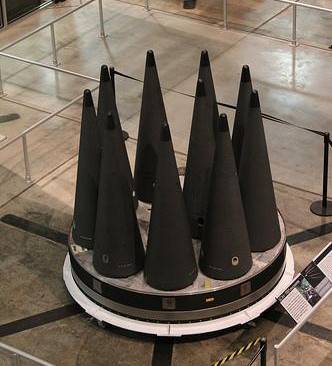
The first launch of the MX from the Minuteman mine took place in August 1985, and in 1986 the missile was put into service under the designation LGM-118A Peacekeeper. The first four Peacekeepers were put on combat duty in April 1986 at the positions of the 400th Missile Squadron at Warren Air Force Base in Wyoming.
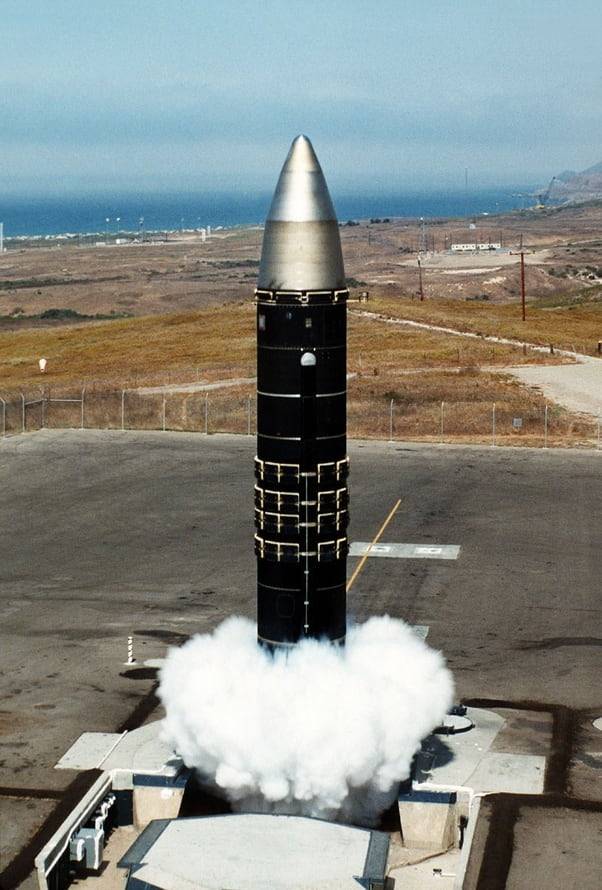
From the very beginning, various options for placing ICBMs LGM-118A were envisaged. Due to excessive dimensions and mass, the soil complex was considered unviable.
According to the plan adopted in early 1983, it was supposed to deploy 100 missiles in the mines. By 1992, another 50 mobile railway launchers (25 trains with two missiles each) were to be put into operation.
However, in the future, the construction of the BZHRK was abandoned, and the number of missiles deployed in silos was limited to 50 units. The release of ICBMs LGM-118A was completed by 1998. A total of 114 missiles were built.
The service of the Pikekeeper ICBM was short-lived.
The last missiles were removed from duty in September 2005. They were liquidated in connection with the signing of treaties on the reduction of strategic offensive arms. After the end of the Cold War, Trident-2 SLBMs deployed on missile submarines were recognized as the best alternative.
After the decommissioning of the LGM-118A Peacekeeper ICBM, Orbital Sciences Corporation used the rocket stages to create Minotaur IV launch vehicles.
The structure of strategic missile units of the US Air Force
Currently, the US Air Force Global Strike Command has the 20th Air Force (headquarters at Warren Air Force Base), which includes the 90th Strategic Missile Wing (319th, 320th and 321st Missile Squadrons), 91st e strategic missile wing (740th, 741st and 742nd missile squadrons), 341st strategic missile wing (10th, 12th and 490th missile squadrons).
The 20th Air Army also includes the 576th Flight Test Squadron, the 582nd Helicopter Group, the 377th Base Air Wing and the 620th Missile Training Squadron.
Missile squadrons of the 90th Strategic Wing (headquarters at Warren Air Force Base, Wyoming), the 91st Strategic Wing (headquarters at Minot Air Force Base, North Dakota), the 341st Strategic Wing (headquarters at Maelstrom Air Force Base, Montana) are combat duty units armed with silo-based LGM-30G Minuteman III ICBMs.
The Vandenberg Space Force Base in California operates the 576th Flight Test Squadron, which is currently mainly engaged in providing control and test launches of Minuteman-3 missiles.
There are several operational silo launchers in the vicinity of Vandenberg Air Force Base suitable for ICBMs. However, these shafts are currently only used for testing purposes. After each rocket launch, it takes several months to restore the silo.
Up to two dozen old missile silos still remain along the coast. But test launches of Minuteman-3 ICBMs are made only from four located in the northwestern part of the base.
The 585th Helicopter Group (headquartered at Warren AFB) operates UH-1N Twin Huey helicopters. In 2021, Hueys began to be replaced by MH-139A Gray Wolf helicopters.
Separate squadrons of the 585th helicopter group, based in ICBM deployment areas, are designed to support the activities of missile squadrons and the operational deployment of rapid response units in the event of a crisis.
The 377th Base Air Wing (headquarters at Kirtland Air Force Base, New Mexico) has units that provide security, supply, technical and medical support for missile units on combat duty.
Number and condition of the ground component of the American strategic nuclear forces
In a number of Russian media, the idea is actively promoted that the ground component of the American strategic nuclear forces has long been "rotten", and the "rusty" and "small" silo-based Minuteman-3 ballistic missiles do not pose a particular threat to us.
Let's try to figure out if this is actually the case.

According to information published in open sources, up to 400 silo-based LGM-30G Minuteman III ICBMs are currently deployed in the US states of Wyoming, Colorado, Montana, North Dakota and Nebraska.
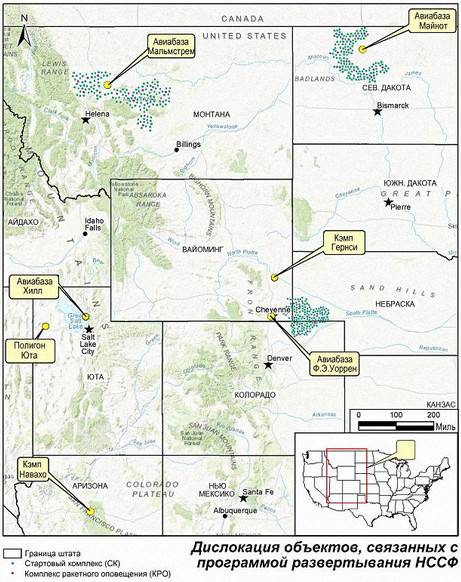
The missile silos are separated from each other by 8-14 km, which excludes the defeat of one nuclear warhead by an explosion. The removal of the silo from the control post is from 8 to 24 km.
One and a half hundred ICBMs and 15 command posts belonging to the 341st Missile Wing are scattered around Maelstrom Air Force Base in Montana.
The control centers of the starting units are connected with higher headquarters and silos by cable communication lines, by radio and via satellite channels. It also provides for the transmission of combat control signals from the Doomsday aircraft E-4B and E-6B.
Launchers of the 90th missile wing are located in the states of Nebraska (72 mines), Colorado (44 mines) and Wyoming (34 mines).
In western North Dakota, there are 150 mines and 15 control centers for three squadrons of the 91st Missile Wing.
Although the three strategic missile wings of the 20th Air Army serve 450 silos, no more than 400 intercontinental ballistic missiles are actually on combat duty.
All of them are equipped with only one Mk.12A warhead with a W78 warhead with a capacity of 350 kt or a Mk.21 warhead with a W87 warhead (dismantled from LGM-118A Peacekeeper missiles) with a capacity of 300 kt.
Initially, the Minuteman-3 ICBM could carry three individually targetable warheads, but by 2006, the Americans unilaterally reduced the number of warheads on all silo-based missiles to one.
Since the W78 warheads do not meet modern safety requirements, and are also in the final stage of their life cycle, we should expect the decommissioning of the Mk.12A warheads.
However, there are still approximately two hundred more recent W87 warheads in nuclear storage, and if necessary, they can be put on missiles.
The LGM-30G Minuteman III missile entered service in 1970, and serial production ended in 1978. Thus, the age of the freshest American ICBM on combat duty is more than 40 years old.
Based on this, "patriotic" Russian citizens declare the "incapacity" of American silo-based ballistic missiles.
Also, some American experts specializing in the field of strategic nuclear weapons consider the combat value of the existing Minutemen in a very peculiar way.
A number of American experts believe that the main purpose of the four hundred Minuteman-3 ICBM silos scattered across Montana, Nebraska, Colorado, Wyoming and North Dakota is to “absorb” enemy warheads.
Taking into account the fact that nuclear submarines with Trident-2 missiles on combat duty are practically invulnerable to a simultaneous surprise attack, a potential aggressor will most likely try to disable stationary silos, the coordinates of which are known.
Destroying the more vulnerable control centers of the starting units will not give a result, but will only delay the retaliatory strike. In this case, reserve options are provided. In particular, control commands can broadcast E-4B and E-6B aircraft.
To neutralize 400 silos, launch control infrastructure, missile bases and arsenals, according to the most conservative estimates, at least 600 warheads will be required. That is, the main task of the old "Minutemen" may be to divert enemy warheads, which can potentially be used against other important objects.
Hence the nickname of intercontinental ballistic missiles - America's "nuclear sponge".
Between 1998 and 2009, all LGM-30G missiles currently on combat duty went through life extension activities, which should ensure their service until 2030.
Only $ 543 million was spent on replacing solid fuel in three stages. A number of critical components were also replaced and control equipment was updated.
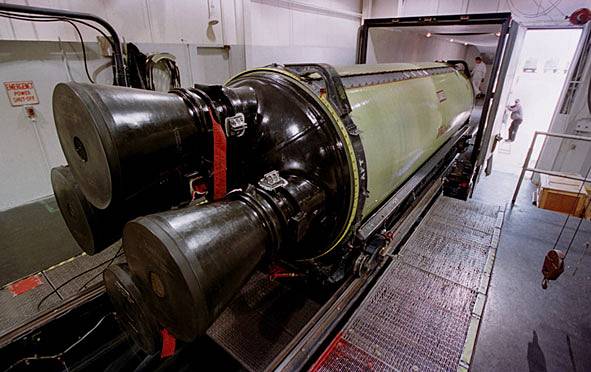
As part of the REACT (Rapid Execution And Combat Targeting) program, work was carried out to improve the performance of the control and remote control system.
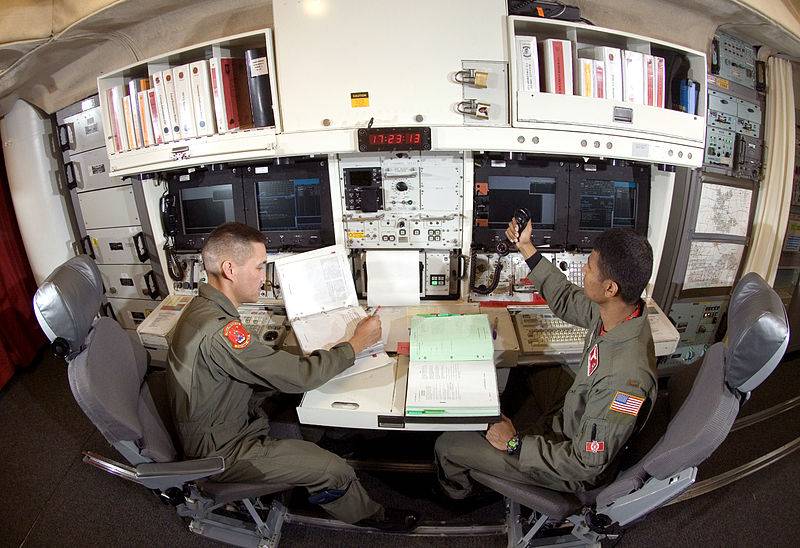
Control points for launch units and launch complexes received modern communication and information display equipment. This made it possible to improve the passage of combat teams, to reduce the time for redirecting missiles.
To confirm the reliability of the existing Minuteman-3 ICBMs and test elements of the missile defense system, missile launches are regularly carried out from Vanderberg airbase.
Not all tests are successful.
Sometimes the communication equipment is not able to receive and process the combat control signals broadcast from the E-6B aircraft. In this case, the launch is delayed for some time, and the rocket is launched at the command of the ground command post.
So, during the tests conducted by the 576th Flight Test Missile Squadron in 2020–2021, out of five launches, one was considered unsuccessful, one was postponed due to “unfavorable conditions”, and one more was canceled by a computer during the prelaunch preparation.
Based on the statistics of control and test launches published in the United States, we are making statements about the inability of the "rusty" Minuteman-3 ICBMs to perform a combat mission.
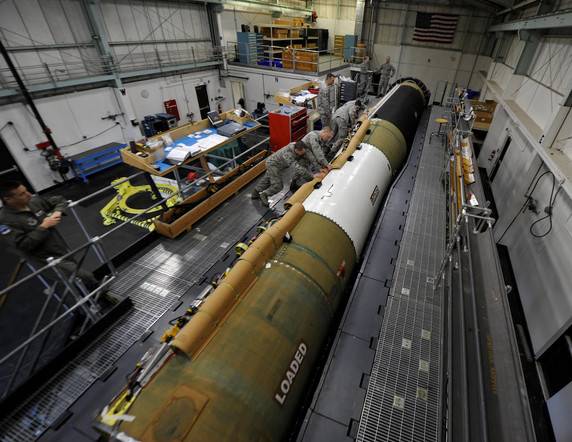
However, it should be understood that the oldest missiles, taken from storage and re-equipped by specialists from the 576th Flight Test Squadron, are used for shooting at the range.
According to expert estimates, if necessary, the US Air Force Global Strike Command will be able to launch at least 70% of the available ICBMs within half an hour. Another 20% of the missiles, provided that their positions are not destroyed, will launch in the next 24 hours.
Of course, some missiles will fail in flight, and part of the warheads can be intercepted by anti-missile defense systems. But even in this case, more than two hundred warheads with a capacity of at least 300 kt will break through to the targets.
With an air detonation of a thermonuclear charge with such an energy release, urban buildings will be completely destroyed within a radius of up to 1,5 km from the epicenter. Within a radius of 3 km there will be a collapse of residential buildings. At a distance of up to 6 km, people caught in an explosion in an open area will receive third-degree burns. At a distance of 3 km from the point of explosion, windows will be shattered.
A nuclear explosion with a power of 300 kt can completely destroy the central part of such a million-plus city as Voronezh. In this case, about 200 thousand people will die or be seriously injured.
Russia will suffer very heavy losses in the event of a sudden strike on megacities. At least 34,5 million people live in sixteen million-plus cities - almost every fourth Russian.
That is, only very naive citizens or people with an inadequate psyche can claim that American ICBMs do not pose a danger to us.
Plans to upgrade American silo-based ICBMs
In 2019, the US Air Force decided not to extend the service life of the Minuteman-3 and concentrate on creating a new missile.
Since 2020, Northrop Grumman has been developing a new generation of GBSD (Ground Based Strategic Deterrent) ICBMs in the United States. The amount of the contract for R&D and testing is $13,3 billion.
It is tentatively scheduled to deploy the first new-generation ICBMs in 2029. It is planned to purchase 659 missiles, 400 of which will be deployed in existing silos, and the rest are intended for test launches and reserves.
GBSD missiles will be able to carry both monobloc and multiple reentry vehicles. As warheads, it is supposed to use modified Mk.21s with updated W87-1 charges.
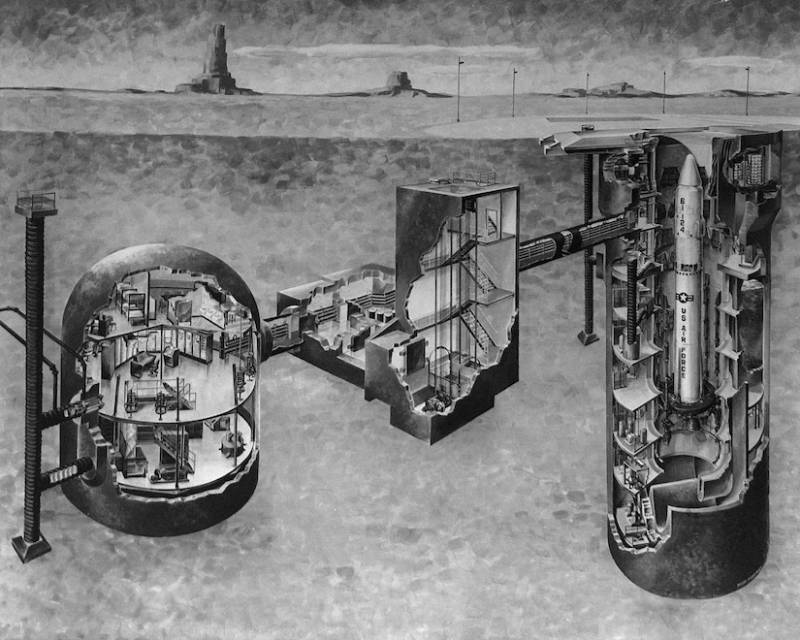
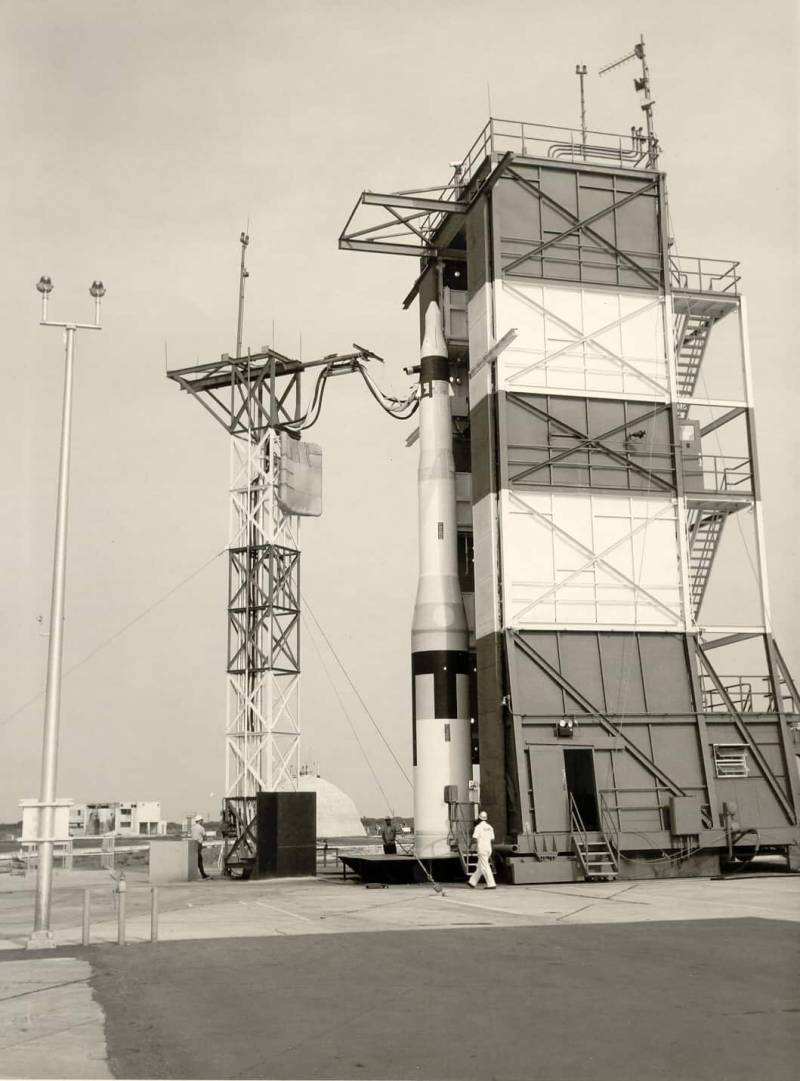
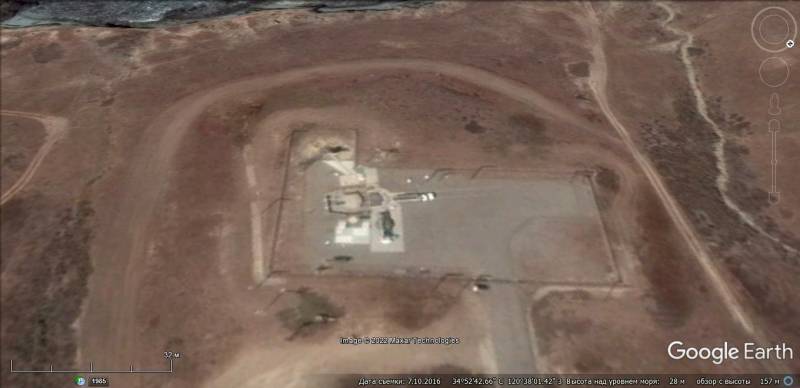
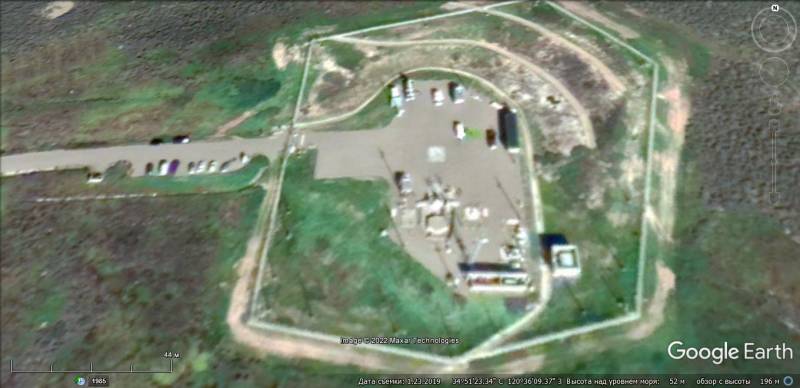
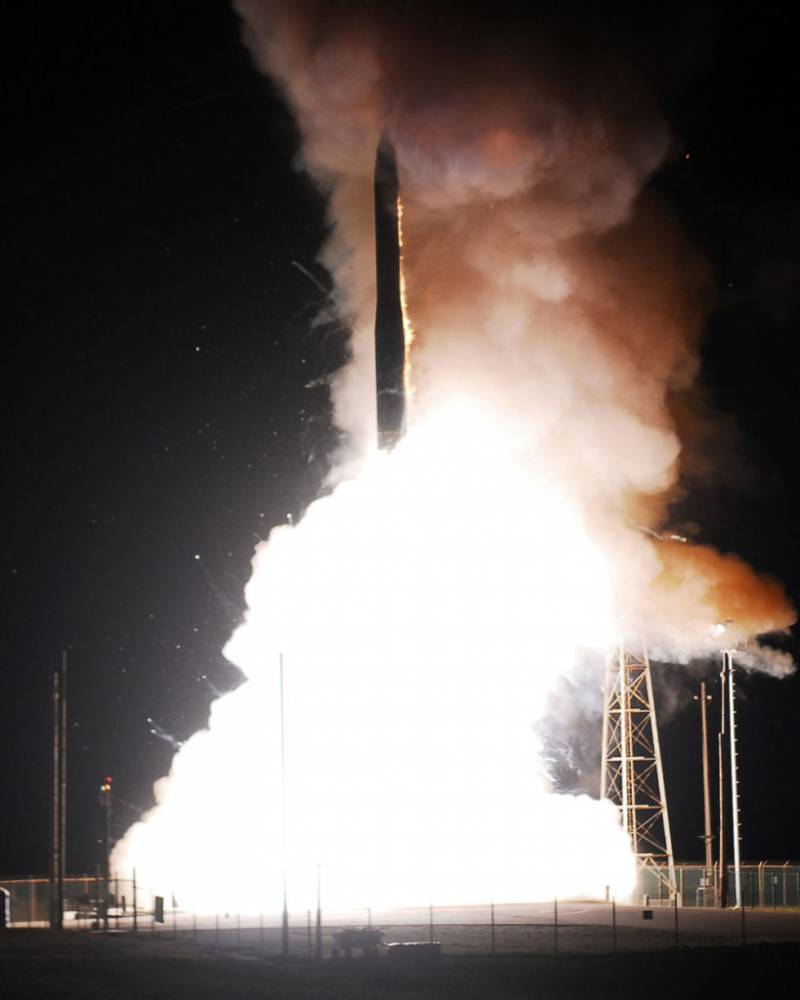
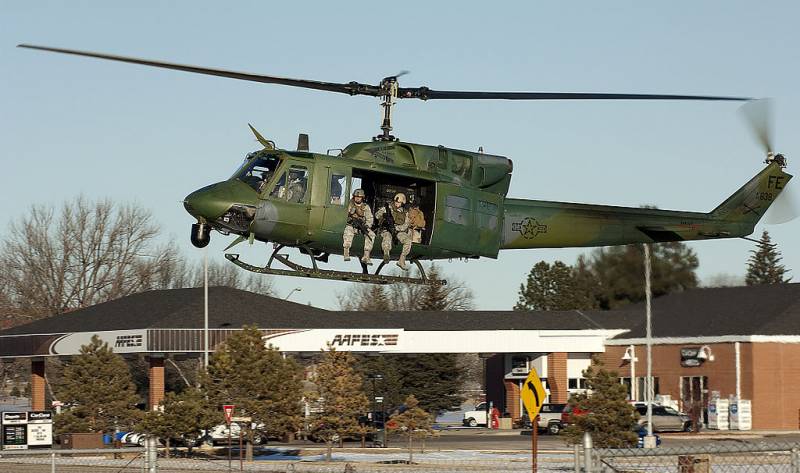
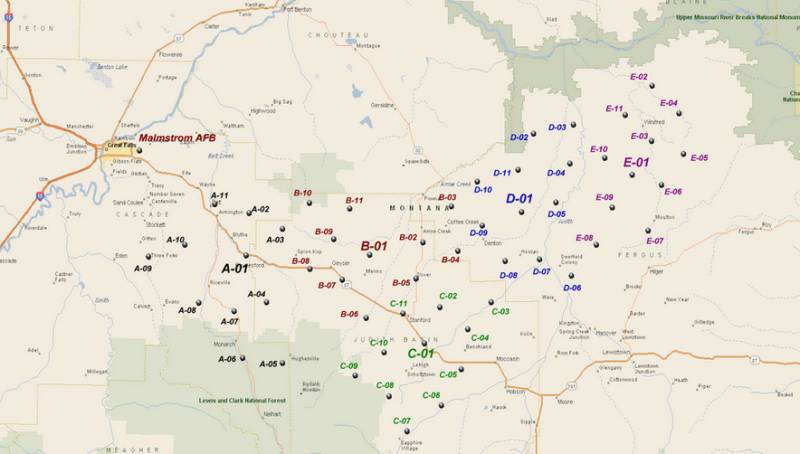
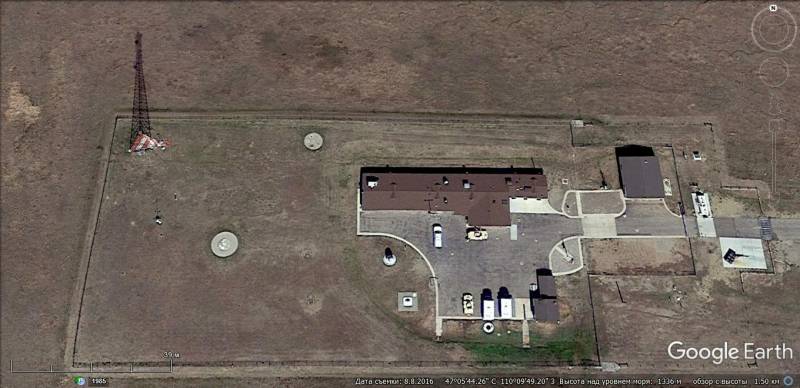

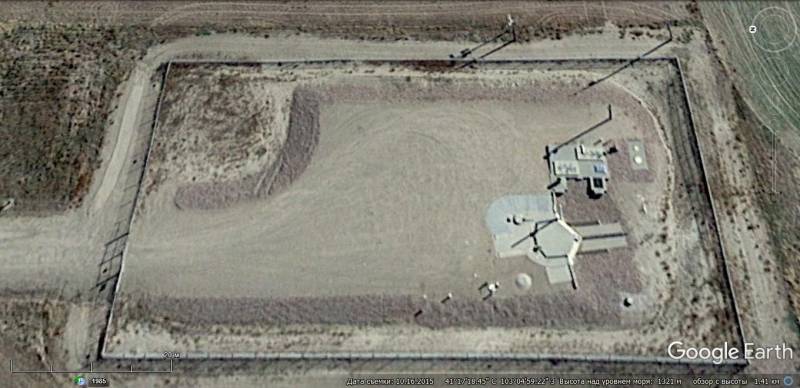
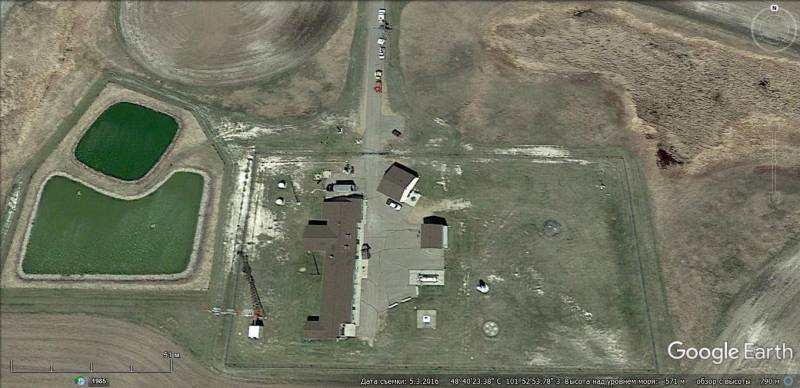
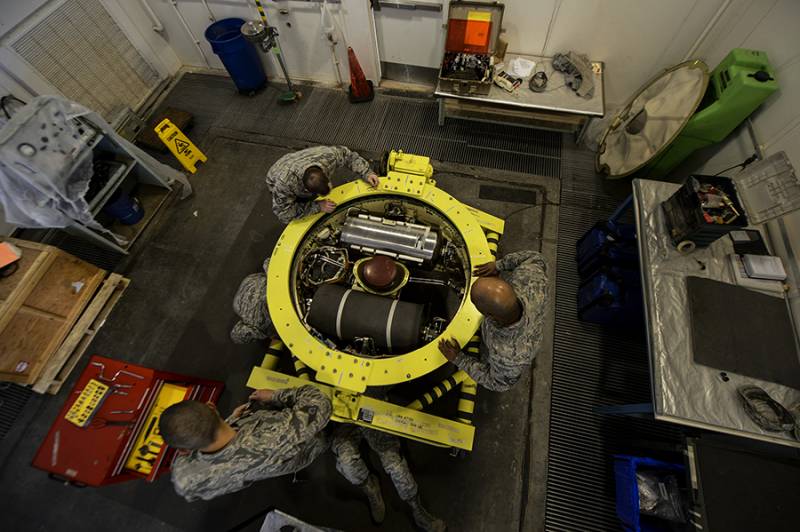
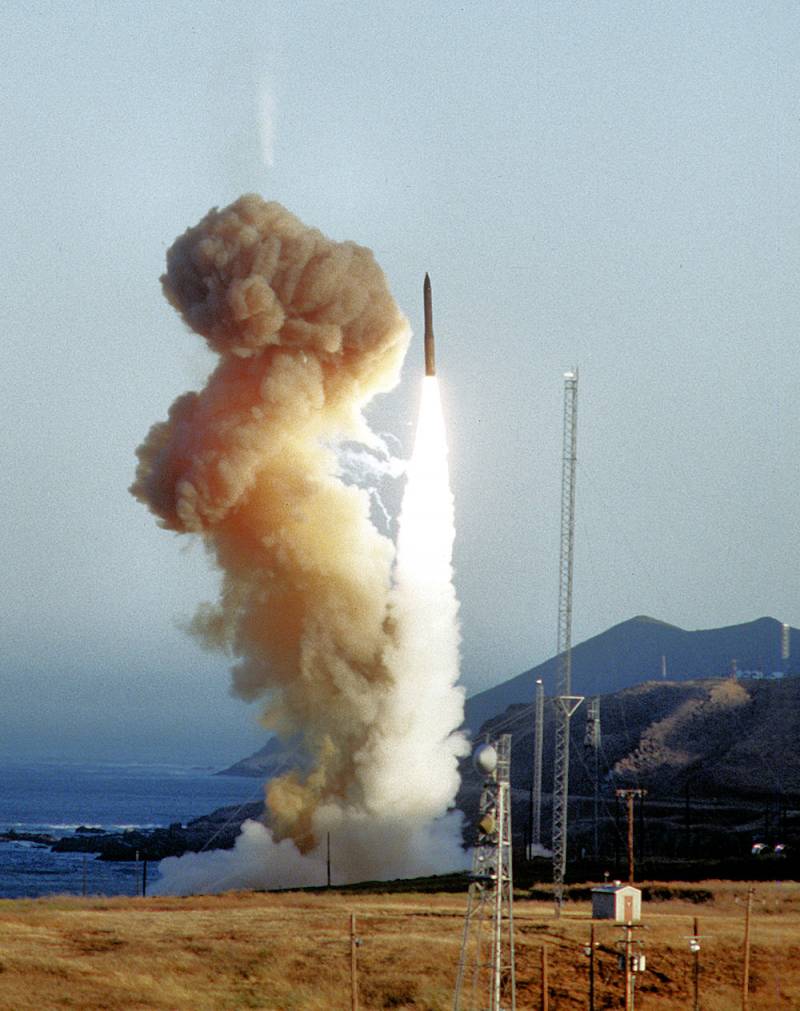
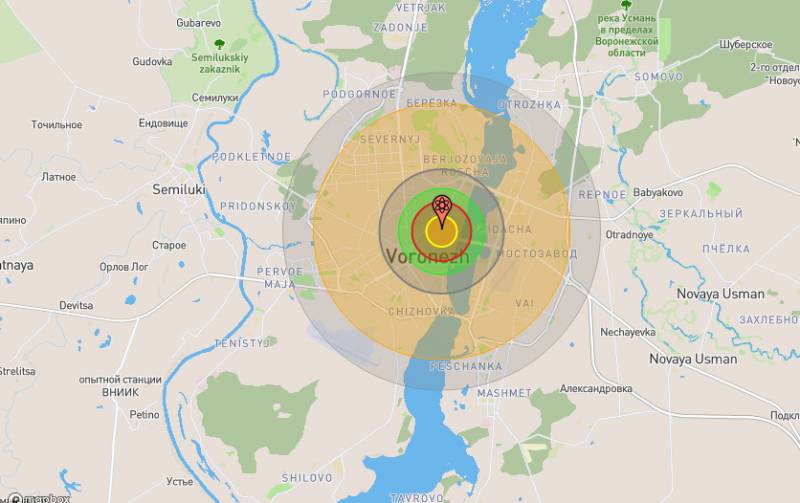
Information